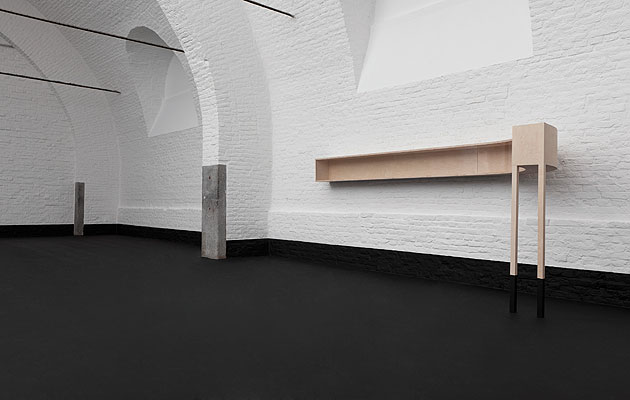|
|
||
|
When the curator of Grand-Hornu museum in Boussu, Belgium, commissioned Fabrica to create a furniture series, the institution didn’t expect its staff to be the subject of the show. But the first thing Fabrica’s ten international designers did on arrival was to interview the museum’s cleaners, curators, craftsmen, shop assistants and guides on the theme of their favourite object. “I decided it was time to rethink design exhibitions in a museum,” says Sam Baron, creative director of Fabrica, the Benetton Group’s communication research centre. “Our idea was to make the exhibition from the space where it would be exhibited, using the narratives and resources on site.”
Among these three-dimensional stories, which comprise about 15 pieces of furniture, is a cabinet with a hidden drawer for a hairbrush handed down through four generations. It was given to one of the workers before her mother died. “Her house was burgled – and the first thing she did was to rush to the drawer with the brush in to see if it was there – it was the only drawer the burglars hadn’t touched. This brush was nothing major, but it was of immense value.” A more traditional design solution is for a woman who had her electrics messed up by builders and was left with no overhead lighting. The designers made a chair with a hook from which a bulb can be hung. Each piece in the Objet Préféré show was designed by committee, which was “pretty hard”, Baron says, but was integral to the pared-down aesthetic of the objects. “We had to find a common design language that could be understood by everyone who visited.” He adds that the pieces, which are on show until the end of October, were designed around the skills of the workmen at the museum: “[They] had to be simple.” The narrative-led work also addresses what Baron sees as a bigger problem: that design has become about designers, and is unconnected to the end user. “I think it’s important to rethink the profession,” he says. “What is our function as designers? We need to take time to pay attention to who we are working for again. Design should go back to the beginning: providing a service.”
|
Image Grand-Hornu
Words Anna Bates |
|
|
||



















